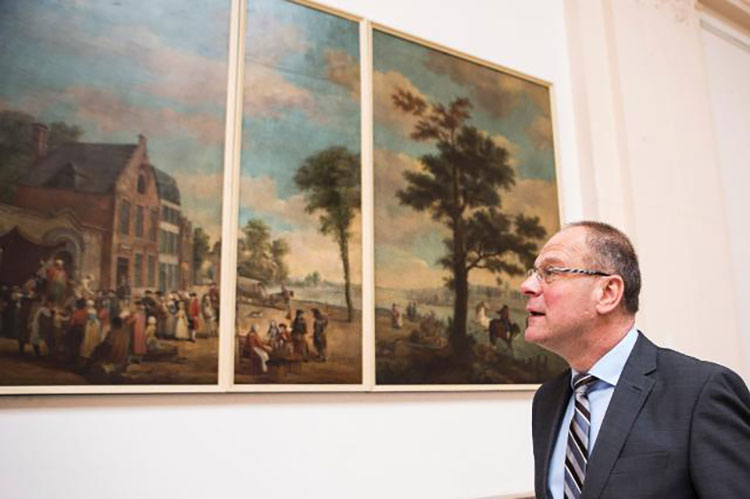In the context of the European Year of Cultural Heritage 2018, the European Commission is today organising a High-Level Horizon 2020 Conference on Innovation and Cultural Heritage to present some of the most promising innovations to preserve and treasure Europe’s cultural heritage for the next generations.
Commissioners Navracsics, Moedas, and Gabriel are attending the conference.
Research and innovation can nurture smart and technologically advanced solutions to the challenges Europe is facing in trying to protect and benefit from its cultural heritage. Among the topics to be discussed today are the actions taken by the European Commission in order to contribute to long-term synergies between science, research, innovation and culture for the benefit of cultural heritage. These include providing digital access to physically inaccessible sites, helping preserve priceless artefacts, and exploring new ways of valuing cultural heritage for creative industries.
Commissioner Navracsics in charge of Education, Culture, Youth and Sport, said: “We need to preserve our cultural heritage for the next generations. Research and innovation are our great allies – they offer advanced solutions and technologies to achieve this. We are using the occasion of the European Year of Cultural Heritage to highlight long-term projects aimed at protecting and promoting heritage.”
 Commissioner Moedas, in charge of research, Sciences and Innovation, said: “Cultural heritage is a limitless source of innovation where traditions meet with cutting-edge technologies. Our ambition is to make Europe the world leader in heritage-based innovation with support from Horizon 2020, the EU’s research and innovation funding programme.”
Commissioner Moedas, in charge of research, Sciences and Innovation, said: “Cultural heritage is a limitless source of innovation where traditions meet with cutting-edge technologies. Our ambition is to make Europe the world leader in heritage-based innovation with support from Horizon 2020, the EU’s research and innovation funding programme.”
Commissioner Gabriel, charge of Digital Economy and Society,said: “Technological and digital innovations have a unique potential because they facilitate the access to our heritage in a way that has never been achieved in our history. For example, the online platform Europeana is not just a digital vault that preserves our cultural heritage but a channel and an open door to our past, present and future.”
Today, the Commission will also present its policy review ‘Innovation in Cultural Heritage Research’, which assesses EU-funded research on cultural heritage and proposes improvements to the European Research Framework after 2020. Between 2014 and 2020, the EU is expected to invest €500 million in research and innovation on cultural heritage. The policy review is one element of the so-called innovation pillar of the European Year of Cultural Heritage. The innovation pillar consists of three projects – run by the Commission with EU Member States, the Council of Europe and European universities – to improve Europeans’ skills on cultural heritage, involve citizens better in making decisions about cultural heritage, and promote the role of science and technologies in cultural heritage.



